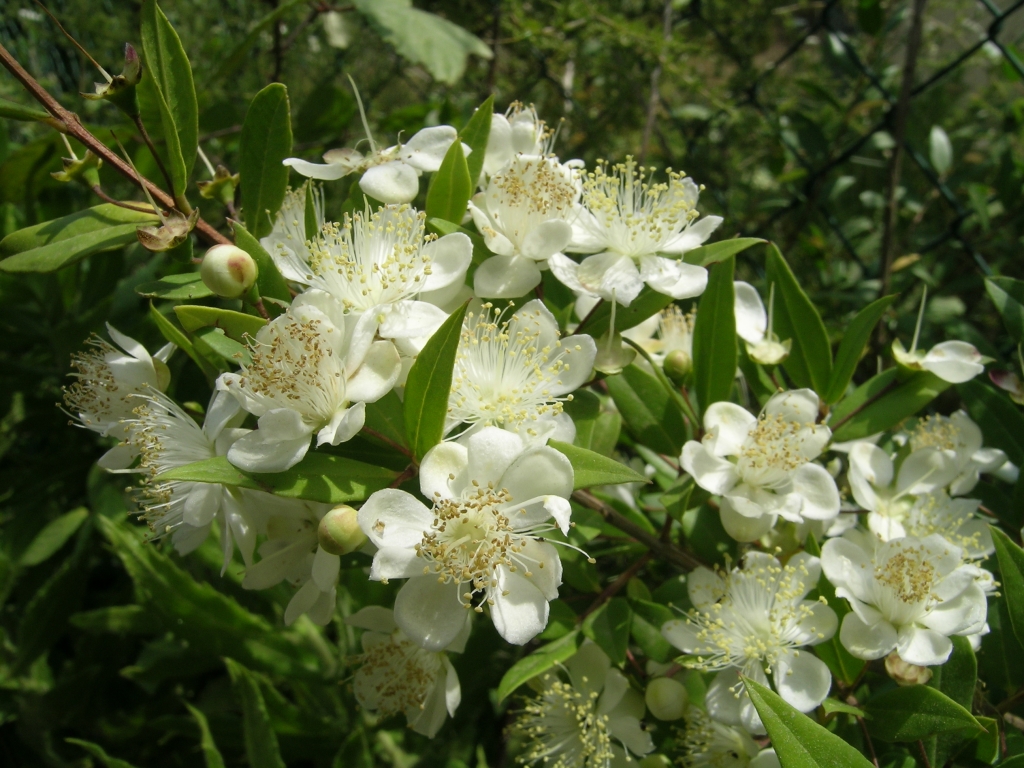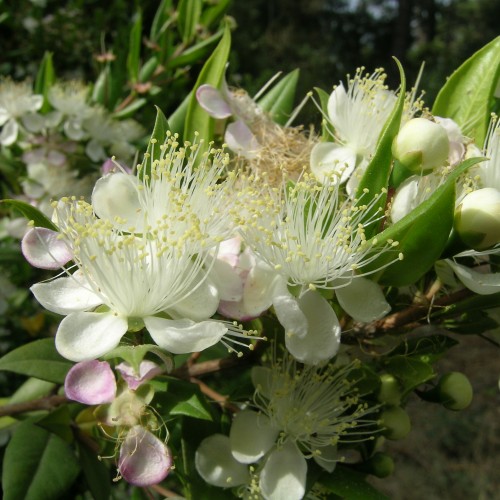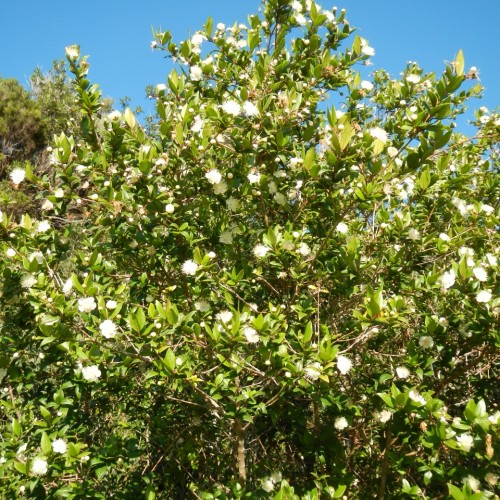
Myrtle is an evergreen shrub with a branched trunk and very dense leaves. It has a globular but irregular form and can reach a height of three metres. Its leaves are glossy, opposite, oval in shape and elongated with a pointed tip. They are aromatic and, if rubbed, emit a fragrance somewhat reminiscent of the scent of orange due to their content of myrtenol.
Myrtle blossoms in late spring and early summer, when its branches are covered with numerous white flowers with many stamens tipped with small yellow anthers. These flowers are 2-3 cm in diameter and generally solitary but sometimes in pairs, with a long peduncle growing from the leaf axil. Its berries are pea-sized, with a diameter of 6-8 mm, slightly elongated and blackish-blue in colour and sometimes purplish-red when ripe, standing out against the plant's bright green foliage. These fruits are slightly fleshy with kidney-shaped seeds that birds and other animals like to eat. It is a typical component of the Mediterranean maquis environment, together with lentisk, holm oak, arbutus, buckthorn, heather and phillyrea.
The species is hardy but thermophilous (indeed, its leaves, though appearing tender, are highly resistant to summer dryness) and it tolerates salt well, growing right up to the cliff edges along the island's coasts. It fears hard frosts which, however, are rare in Elba's coastal areas. It is averse to calcareous soils, preferring neutral or acidic sandy ones, particularly those composed of granite. This is why it is found on the slopes of Mount Capanne, on the island of Giglio, where it is also known as mortolo, and on the igneous soils of the island of Capraia, where it is also known as mortella, but almost absent on the calcareous island of Pianosa. Its habitat includes the Mediterranean coasts, along both the European and North African coasts, and reaches as far as Madeira, to the west, and Afghanistan, to the east.



